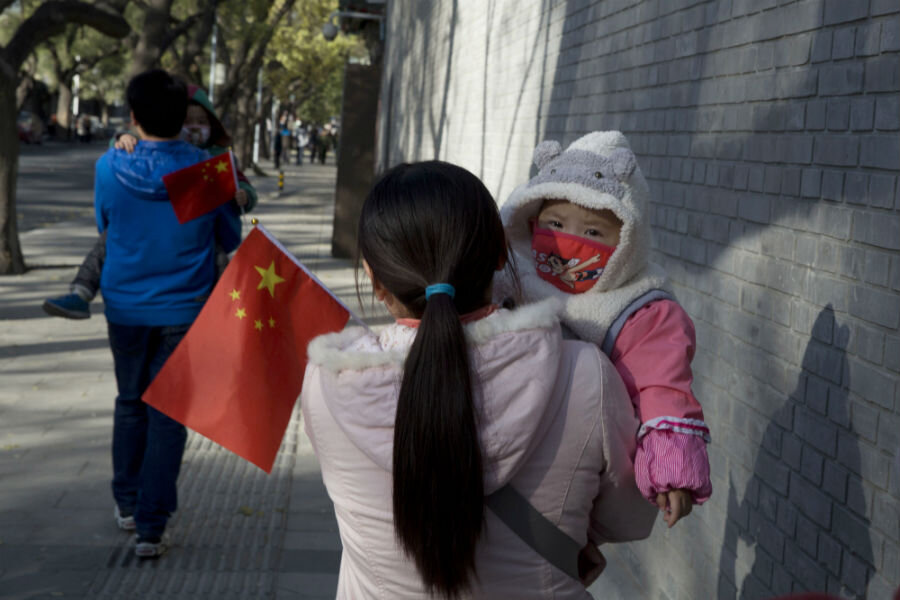China may change its one-child birth quota. Why now?
A Shanghai-based newspaper, citing an unnamed source, reports that China may replace its controversial one-child policy with a two-child policy toward the end of this year or the beginning of next.
China Business News reports that a researcher at the National Health and Family Planning Commission was told that soon all Chinese would be allowed to have two children.
This possibility comes nearly two years after what many are calling a failed rollback of the country’s birth quota policy for urban families. Approximately 11 million couples were granted the right to have a second child in early 2014, as long as one parent was an only child.
But a low number of parents chose to use the reform, roughly half of the projected 2 million had a second child in the new policy's first year.
This was not unexpected by some in China, as The Christian Science Monitor reported:
These days, young urban Chinese couples are less keen on having more than one child, even when they are allowed to. Frightened by the spiraling cost of raising and educating a child, and of buying an apartment big enough for a family of four, many are voluntarily sticking with one baby....
“China’s low fertility level is a result of the country’s economic and social development, not of family planning policy,” says Liang Zhongtang, a member of the National Family Planning Commission. “Changing the policy would not make much difference.”
The feeling that the reform did not answer Chinese people's concerns for its aging population, declining workforce, and a deceleration in economic growth, may be why Premier Li Keqiang announced in March that the government would "push forward reform of birth-control management."
Yi Fuxian, author of “A Big Country with an Empty Nest,” said in an interview with Bloomberg that the late 2013 reform has not been enough to make a meaningful change to China’s demographic trend.
“China is turning grey on an unprecedented scale in human history, and the government, even the whole Chinese society, isn’t prepared for it,” Yi said.
The working-age population, those aged 16 to 59, fell by 3.71 million in 2014, the National Bureau of Statistics of China reported in January, much steeper than the decline of 2.44 million in 2013.
Beijing minimized claims that the two-child policy could be in place by the end of the year. “No timetable has been set to allow all couples in the country to have a second child,” the national health and family planning commission said, according to the state-run China Daily.
The Chinese government credits the birth quota policy with preventing 400 million births and accelerating modernization, but the human cost of forced sterilizations and abortions, infanticide, and a dramatic gender imbalance has also underscored the policy as a human rights issue.
The policy, though, has not been enacted across the whole country, instead it is observed at the province, city, and village level with varying degrees of enforcement. The quota is one baby in urban areas, and two in rural. Ethnic minorities are allowed to have two children in urban areas, and three or four in rural areas, The Guardian reports. Urban couples can pay a fine for extra children.
Liang Zhongtang, a demographer from the Shanghai Academy of Social Science, said the policy should have been abolished long ago, in an interview with The Guardian. “The core issue is not about one child or two children. It’s about reproductive freedom. It’s about basic human rights. In the past, the government failed to grasp the essence of the issue,” he said.







